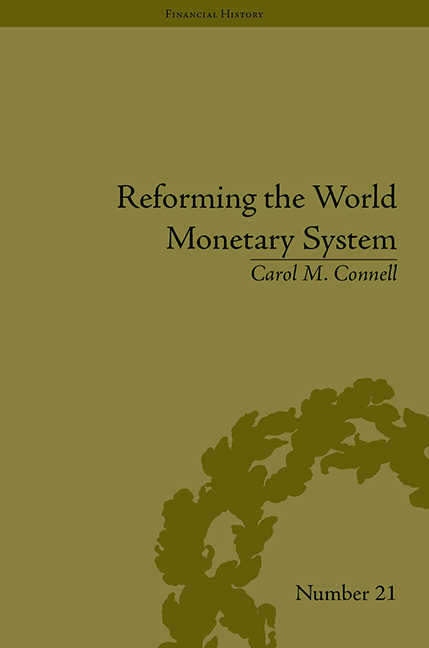Book contents
- Frontmatter
- Contents
- Acknowledgements
- List of Figures and Tables
- Introduction
- 1 A Crisis in Confidence
- 2 Fritz Machlup, his Research and Methodology
- 3 Robert Triffin and the Triffin Plan
- 4 William Fellner and the Intersection of Macro and Microeconomics
- 5 Why Economists Disagree: The Role of Framing in Consensus Building
- 6 ‘Assuring the Free World's Liquidity’ through Multiple Reserve Currencies
- 7 Milton Friedman and the Arguments for Flexible versus Fixed Exchange Rates
- 8 Collaboration with the Group of Ten
- 9 Adjustment Policies and Special Drawing Rights: Joint Meetings of Officials and Academics
- 10 From the Bellagio Group to the Bürgenstock Conferences
- 11 From the Bellagio Group and Joint Conferences of Officials and Academics to the Group of Thirty
- 12 Reassessing the Bellagio Group's Impact on International Monetary Reform
- 13 The Impact of the Bellagio Group on International Trade and Finance Scholarship from the 1960s to the Present
- Conclusions
- Notes
- Works Cited
- Index
8 - Collaboration with the Group of Ten
- Frontmatter
- Contents
- Acknowledgements
- List of Figures and Tables
- Introduction
- 1 A Crisis in Confidence
- 2 Fritz Machlup, his Research and Methodology
- 3 Robert Triffin and the Triffin Plan
- 4 William Fellner and the Intersection of Macro and Microeconomics
- 5 Why Economists Disagree: The Role of Framing in Consensus Building
- 6 ‘Assuring the Free World's Liquidity’ through Multiple Reserve Currencies
- 7 Milton Friedman and the Arguments for Flexible versus Fixed Exchange Rates
- 8 Collaboration with the Group of Ten
- 9 Adjustment Policies and Special Drawing Rights: Joint Meetings of Officials and Academics
- 10 From the Bellagio Group to the Bürgenstock Conferences
- 11 From the Bellagio Group and Joint Conferences of Officials and Academics to the Group of Thirty
- 12 Reassessing the Bellagio Group's Impact on International Monetary Reform
- 13 The Impact of the Bellagio Group on International Trade and Finance Scholarship from the 1960s to the Present
- Conclusions
- Notes
- Works Cited
- Index
Summary
Introduction
IMF and Group of Ten studies were announced by US Treasury Secretary Douglas Dillon at the IMF Annual Meeting in September 1963 (the same time a commitment to pursue a similar study was made by Machlup, Triffin and Fellner, who were attending the same meeting). The Group of Ten study was undertaken in the period 1963–4 by the deputies of the Group of Ten. Machlup had scheduled the publication of the Bellagio Group's final report for June 1964, preceding by two months the official publication of the IMF staff and Group of Ten reports. The Bellagio Group's report, International Monetary Arrangements: The Problem of Choice (1964), was shared with the IMF and deputies of the Group of Ten and attracted significant attention, especially from the chairman of the deputies of the Group of Ten, Otmar Emminger, and the chairman of the OECD's Working Party 3, Emile van Lennep. Their interest in the Bellagio Group coincides with the rising importance of the Group of Ten countries and the assignment of major IMF projects to the deputies of the Group of Ten. Chapter 8 first explores the historical context of the rising importance of the Group of Ten.
- Type
- Chapter
- Information
- Reforming the World Monetary SystemFritz Machlup and the Bellagio Group, pp. 109 - 124Publisher: Pickering & ChattoFirst published in: 2014



